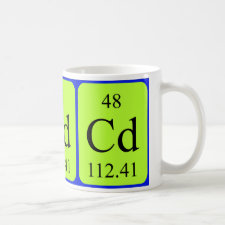
Authors: Yang CY, Chen FB, Zhao H, Chang ZQ, Zhang ZJ
Article Title: Synthesis and adsorption property of Cd(II) - 8-hydroxyquinoline molecularly imprinted polymer microspheres.
Publication date: 2014
Journal: Environmental Science
Volume: 35
Issue: (6)
Page numbers: 2223-2229.
Alternative URL: http://www.hjkx.ac.cn/hjkx/ch/reader/view_abstract.aspx?file_no=20140625&flag=1
Abstract: Cd(II) ion could form a stable complex with 8-hydroxyquinoline (molar rate=1:1) in ethanol solution as revealed by ultraviolet spectrum analysis. Based on this molar rate of Cd(II) ions and 8-hydroxyquinoline, Cd(II) ions imprinting polymer microspheres were synthesized by water-in-oil-in-water (W/O/W) emulsions polymerization, using metal Cd(II) ions as template, 8- hydroxyquinoline as ligand, methacrylic acid as functional monomer, ethylene acrylic acid methyl ester as cross-linker, and azodiisobutyronitrile as initiator in aqueous phase. The influences of the dosage of emulsifier, porogen and outer aqueous phase on the morphology and adsorption property of MIP were studied. The morphology of MIP was characterized by SEM which showed that the diameter of MIP was of micrometer grade and the shape was homogeneous under some operating conditions. The adsorption properties of MIP synthesized under different conditions were compared. The influences of solution pH, adsorption time, initial concentration and temperature on MIP adsorbed Cd(II) ions were assessed. The results showed that MIP showed fast kinetics for adsorption and desorption of Cd(II) ions. It was concluded that MIP could be employed as an effective material for the selective removal of Cd(II) ions from waste water.
Template and target information: cadmium ion, Cd(II)



Join the Society for Molecular Imprinting

New items RSS feed
Sign-up for e-mail updates:
Choose between receiving an occasional newsletter or more frequent e-mail alerts.
Click here to go to the sign-up page.
Is your name elemental or peptidic? Enter your name and find out by clicking either of the buttons below!
Other products you may like:
 MIPdatabase
MIPdatabase









